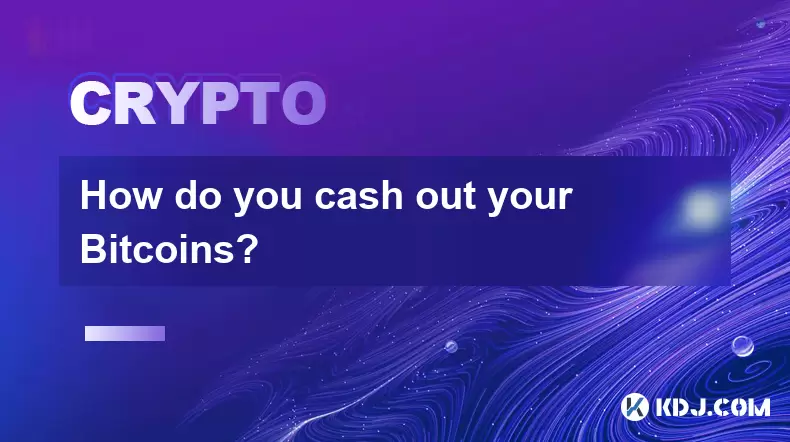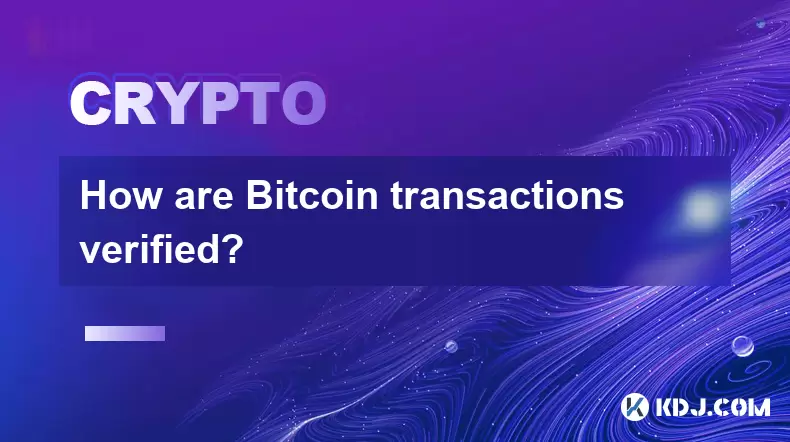-
 Bitcoin
Bitcoin $116700
0.24% -
 Ethereum
Ethereum $3973
4.34% -
 XRP
XRP $3.283
7.68% -
 Tether USDt
Tether USDt $1.000
0.01% -
 BNB
BNB $789.8
2.27% -
 Solana
Solana $176.2
3.31% -
 USDC
USDC $0.9999
0.00% -
 Dogecoin
Dogecoin $0.2238
5.14% -
 TRON
TRON $0.3389
-0.51% -
 Cardano
Cardano $0.7907
4.03% -
 Stellar
Stellar $0.4527
10.02% -
 Hyperliquid
Hyperliquid $41.07
4.27% -
 Sui
Sui $3.794
1.77% -
 Chainlink
Chainlink $19.49
10.40% -
 Bitcoin Cash
Bitcoin Cash $580.9
0.74% -
 Hedera
Hedera $0.2617
4.32% -
 Avalanche
Avalanche $23.41
3.67% -
 Ethena USDe
Ethena USDe $1.001
-0.03% -
 Litecoin
Litecoin $122.4
1.38% -
 Toncoin
Toncoin $3.364
1.49% -
 UNUS SED LEO
UNUS SED LEO $8.988
0.37% -
 Shiba Inu
Shiba Inu $0.00001295
2.82% -
 Uniswap
Uniswap $10.62
5.75% -
 Polkadot
Polkadot $3.922
4.46% -
 Dai
Dai $1.000
0.01% -
 Bitget Token
Bitget Token $4.494
2.15% -
 Monero
Monero $268.0
-1.30% -
 Cronos
Cronos $0.1523
3.68% -
 Pepe
Pepe $0.00001127
4.43% -
 Aave
Aave $285.4
4.85%
How do you cash out your Bitcoins?
To cash out Bitcoin, use a secure wallet and private keys, sell via an exchange or P2P platform, withdraw to your bank, and keep records for tax purposes.
Aug 09, 2025 at 06:56 am

Understanding Bitcoin Wallets and Private Keys
To cash out your Bitcoins, you must first understand the role of your Bitcoin wallet and the importance of your private keys. A Bitcoin wallet stores your private keys, which are cryptographic codes that allow you to access and control your Bitcoin on the blockchain. Without your private keys, you cannot authorize transactions. Wallets can be hardware-based, like Ledger or Trezor, or software-based, such as mobile apps like Trust Wallet or desktop clients like Electrum. When preparing to cash out, ensure your wallet is secure and you have full control over your private keys. If your Bitcoins are stored on a centralized exchange like Coinbase or Binance, the exchange holds your private keys, so you’ll need to transfer them to a personal wallet first or sell directly through the platform.
Choosing a Bitcoin Exchange Platform
To convert Bitcoin into fiat currency (like USD, EUR, or GBP), you need to use a cryptocurrency exchange that supports fiat withdrawals. Popular platforms include Coinbase, Kraken, Binance, and Gemini. These exchanges allow users to sell Bitcoin and transfer the resulting fiat to a linked bank account. Before using any exchange, verify that it operates in your country and supports your preferred fiat currency. You must complete a Know Your Customer (KYC) verification process, which typically involves uploading a government-issued ID, proof of address, and sometimes a selfie. Once verified, you can link your bank account via ACH transfer, SEPA, or wire transfer, depending on your region.
Selling Bitcoin for Fiat Currency
After setting up your exchange account and linking your bank details, you can proceed to sell your Bitcoin. Log in to your exchange account and navigate to the trade section. Select the BTC/fiat pair, such as BTC/USD. Enter the amount of Bitcoin you want to sell. You can choose between a market order, which sells immediately at the current price, or a limit order, which allows you to set a specific price at which you want to sell. Confirm the transaction. The exchange will deduct its transaction fee, which varies by platform and payment method. After the sale, the equivalent fiat amount will appear in your exchange wallet. This process is irreversible, so double-check the amount and destination before confirming.
Withdrawing Fiat to Your Bank Account
Once your Bitcoin has been converted to fiat, the next step is to withdraw the funds to your bank account. Go to the withdrawal section of the exchange. Select your linked bank account and enter the amount you wish to transfer. Be aware of withdrawal limits and processing times. For example, Coinbase allows ACH transfers in the U.S. that typically take 1–3 business days. Some exchanges offer instant withdrawals for a higher fee, especially if using a debit card. International users may experience longer wait times due to SEPA processing or intermediary bank involvement. After submitting the withdrawal request, monitor your bank account for the deposit. Keep transaction IDs and confirmation emails for your records.
Using Peer-to-Peer (P2P) Platforms
An alternative method to cash out Bitcoin is through peer-to-peer (P2P) marketplaces like LocalBitcoins, Paxful, or Binance P2P. These platforms connect Bitcoin sellers directly with buyers. You create a sell offer specifying the price, payment method (bank transfer, PayPal, gift cards), and amount. When a buyer accepts your offer, the platform holds the Bitcoin in escrow. After you receive payment, you release the Bitcoin from escrow. This method offers more payment flexibility but carries higher risk, especially with unverified buyers. Always use the platform’s dispute resolution system and avoid releasing Bitcoin before confirming payment. P2P trading is useful in regions with limited access to traditional exchanges.
Using Bitcoin ATMs
Another way to cash out Bitcoin is through Bitcoin ATMs. These physical kiosks allow you to sell Bitcoin and receive cash instantly. Locate a nearby Bitcoin ATM using websites like CoinATMRadar. At the machine, scan the QR code of your Bitcoin wallet address. Enter the amount of Bitcoin you want to sell. The ATM will display the equivalent cash amount minus fees, which can range from 10% to 20%. Confirm the transaction. The machine will then send the Bitcoin to a designated address and dispense cash. Some ATMs require SMS verification or ID scanning for larger transactions due to regulatory requirements. While fast and convenient, Bitcoin ATMs often have lower limits and higher fees compared to exchanges.
Tax Implications and Record Keeping
Cashing out Bitcoin is considered a taxable event in many jurisdictions. When you sell Bitcoin for fiat, you may incur capital gains tax based on the difference between your purchase price and the selling price. Keep detailed records of all transactions, including dates, amounts, prices, and fees. Use tools like Koinly, CoinTracker, or TurboTax Crypto to calculate your tax liability. Some exchanges provide year-end tax reports. Failure to report cryptocurrency gains can lead to penalties. Consult a tax professional familiar with digital assets to ensure compliance with local regulations.
Frequently Asked Questions
Q: Do I need to pay fees when cashing out Bitcoin?
Yes, every method of cashing out involves fees. Exchanges charge trading fees (typically 0.1%–0.5%) and withdrawal fees for bank transfers. Bitcoin ATMs have the highest fees, often 10% or more. P2P platforms may charge service fees or escrow costs. Always check the fee structure before proceeding.
Q: How long does it take to receive money after selling Bitcoin?
Bank withdrawals from exchanges usually take 1–5 business days, depending on the method and region. ACH transfers in the U.S. take 1–3 days. SEPA transfers in Europe take 1–2 days. Instant card withdrawals may arrive within minutes but cost more. Bitcoin ATM cashouts are immediate.
Q: Can I cash out Bitcoin without verifying my identity?
Most regulated exchanges require KYC verification for fiat withdrawals. However, some P2P platforms and Bitcoin ATMs allow small cashouts without full ID, especially under certain thresholds (e.g., $900 in the U.S.). These options offer privacy but come with higher risks and fees.
Q: What happens if I send Bitcoin to the wrong address during the cash-out process?
Bitcoin transactions are irreversible. If you send Bitcoin to an incorrect address, recovery is nearly impossible. Always double-check wallet addresses using QR codes or copy-paste methods. Use a small test transaction when sending to a new address to verify accuracy.
Disclaimer:info@kdj.com
The information provided is not trading advice. kdj.com does not assume any responsibility for any investments made based on the information provided in this article. Cryptocurrencies are highly volatile and it is highly recommended that you invest with caution after thorough research!
If you believe that the content used on this website infringes your copyright, please contact us immediately (info@kdj.com) and we will delete it promptly.
- Solana, Litecoin, Remittix: Unpacking the Latest Crypto Trends
- 2025-08-09 09:30:12
- Bitcoin Cash, AIXA Miner, and Daily Income: A New Yorker's Take
- 2025-08-09 09:30:12
- Trump, Crypto, and Public Companies: A New York Minute on Digital Finance
- 2025-08-09 09:50:12
- Trump's 401(k) Crypto Revolution: Is Your Retirement Ready?
- 2025-08-09 09:50:12
- Coinbase, DEX Trading, and Self-Custody: A New Era for Crypto?
- 2025-08-09 09:55:11
- Trump Family, Crypto Ventures, and Stablecoins: A New York Minute on USD1
- 2025-08-09 09:55:11
Related knowledge

Can the Bitcoin protocol be changed?
Aug 07,2025 at 01:16pm
Understanding the Bitcoin ProtocolThe Bitcoin protocol is the foundational set of rules that govern how the Bitcoin network operates. It defines every...

What happens to Bitcoin transactions once they are confirmed?
Aug 09,2025 at 05:22am
Understanding Bitcoin Transaction ConfirmationWhen a Bitcoin transaction is initiated, it is broadcast to the network and placed in a pool of unconfir...

How are Bitcoin transactions verified?
Aug 08,2025 at 06:57am
Understanding Bitcoin Transaction VerificationBitcoin transactions are verified through a decentralized network of nodes and miners that ensure the le...

How does decentralization make Bitcoin secure?
Aug 08,2025 at 09:35am
Understanding Decentralization in BitcoinDecentralization is a foundational principle of Bitcoin's architecture and plays a critical role in its secur...

What are some common misconceptions about Bitcoin?
Aug 07,2025 at 07:22pm
Bitcoin is Just Like Regular MoneyA widespread misconception is that Bitcoin functions identically to traditional fiat currencies like the US dollar o...

What is the role of nodes in the Bitcoin network?
Aug 08,2025 at 04:14pm
Understanding the Function of Nodes in the Bitcoin NetworkNodes are fundamental components of the Bitcoin network, serving as the backbone that ensure...

Can the Bitcoin protocol be changed?
Aug 07,2025 at 01:16pm
Understanding the Bitcoin ProtocolThe Bitcoin protocol is the foundational set of rules that govern how the Bitcoin network operates. It defines every...

What happens to Bitcoin transactions once they are confirmed?
Aug 09,2025 at 05:22am
Understanding Bitcoin Transaction ConfirmationWhen a Bitcoin transaction is initiated, it is broadcast to the network and placed in a pool of unconfir...

How are Bitcoin transactions verified?
Aug 08,2025 at 06:57am
Understanding Bitcoin Transaction VerificationBitcoin transactions are verified through a decentralized network of nodes and miners that ensure the le...

How does decentralization make Bitcoin secure?
Aug 08,2025 at 09:35am
Understanding Decentralization in BitcoinDecentralization is a foundational principle of Bitcoin's architecture and plays a critical role in its secur...

What are some common misconceptions about Bitcoin?
Aug 07,2025 at 07:22pm
Bitcoin is Just Like Regular MoneyA widespread misconception is that Bitcoin functions identically to traditional fiat currencies like the US dollar o...

What is the role of nodes in the Bitcoin network?
Aug 08,2025 at 04:14pm
Understanding the Function of Nodes in the Bitcoin NetworkNodes are fundamental components of the Bitcoin network, serving as the backbone that ensure...
See all articles

























































































